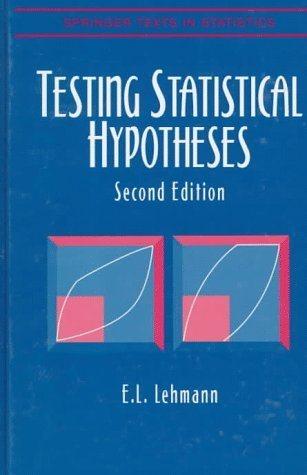28. Let X be an n X p data matrix satisfying the model assumptions made at the...
Question:
28. Let X be an n X p data matrix satisfying the model assumptions made at the beginning of Sections 1 and 5, and let X" = ex, where e is an orthogonal matrix, the first s rows of which span TIo. If y* and Z denote respectively the first s and last n - s rows of X*, then E(Y*) = 1J* say, and E(Z) = O. Consider the hypothesis Ho : V'TJ* V = 0, where V' and V are constant matrices of dimension a X s and p X b and of ranks a and b respectively. (i) The hypotheses of both Section 1 and Section 5 are special cases of Ho. (ii) The problem can be put into canonical form y** (s X p) and Z** «n - s) X p), where the n rows of y** and Z** are independent p-variate normal with common covariance matrix and with means E(Y**) = 1J**,andwhere Ho becomes Ho : 1Jr/ = ofor all i = 1, .. . ,
a, j = 1, . . . ,
b. (iii) Determine groups leaving this problem invariant and for which the first a columns of y** are maximal invariants, so that the problem reduces to a multivariate linear hypothesis in canonical form.
Step by Step Answer:







